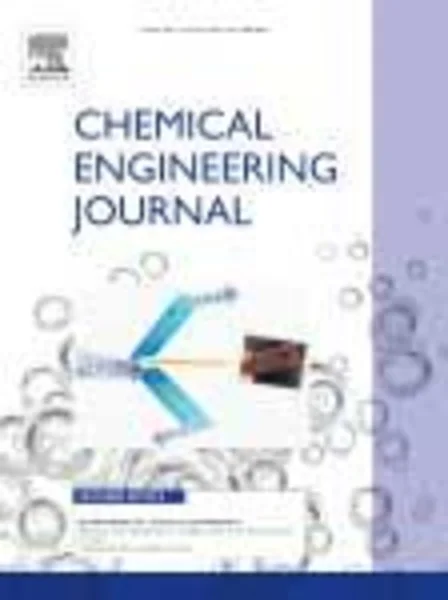-
catalytic ozonation of p-chlorobenzoic acid in aqueous solution using fe-mcm-41 as catalyst
جزئیات بیشتر مقاله- تاریخ ارائه: 1392/01/01
- تاریخ انتشار در تی پی بین: 1392/01/01
- تعداد بازدید: 626
- تعداد پرسش و پاسخ ها: 0
- شماره تماس دبیرخانه رویداد: -
mcm-41and iron-substituted mcm-41 (fe-mcm-41) were synthesized successfully and characterized using x-ray diffraction (xrd), nitrogen adsorption–desorption and transmission electron microscopy (tem). the mesopores of the sample remained well ordering and of hexagonal structure. fe-mcm-41 samples possessed high bet surface areas, high pore volumes and narrowed pore size distribution. their catalytic activities were compared in terms of p-chlorobenzoic acid (p-cba) and toc removal. ozonation catalyzed by fe-mcm-41 exhibited extraordinarily high catalytic performance over other studied processes. 100% conversion of p-cba and 91.3% toc were achieved in 10 min and 60 min, respectively. fe-mcm-41 as a novel heterogeneous catalyst in ozonation process was addressed. the presence of tert-butanol (tba) inhibiting the degradation ofp-cba in the fe-mcm-41/o3 process verified that the hydroxyl radicals derived from ozone decomposition were responsible for the improvement of catalytic ozonation. the mechanism explaining the formation of hydroxyl radicals on fe-mcm-41 surface was proposed. negative centers or brönsted acid sites developed by the substitution of trivalent iron into the walls of mcm-41 and the hydroxyl groups formed as a result of coordinative unsaturation were found to be the active sites enhancing catalytic performance. the superior stability of iron ions in fe-mcm-41 catalyst during the ozonation process was also examined.
مقالات جدیدترین رویدادها
-
استفاده از تحلیل اهمیت-عملکرد در ارائه الگوی مدیریت خلاقیت سازمانی و ارائه راهکار جهت بهبود
-
بررسی تاثیر ارزش وجوه نقد مازاد بر ساختار سرمایه شرکت های پذیرفته شده در بورس اوراق بهادار تهران
-
بررسی تأثیر سطح افشای ریسک بر قرارداد بدهی شرکت های پذیرفته شده در بورس اوراق بهادار تهران
-
بررسی تأثیر رتبه بندی اعتباری مبتنی بر مدل امتیاز بازار نوظهور بر نقد شوندگی سهام با تأکید بر خصوصی سازی شرکت ها
-
تأثیر آمیخته بازاریابی پوشاک ایرانی بر تصویر ذهنی مشتری پوشاک ایرانی (هاکوپیان)
-
بررسی فرآیندهای ژئوشیمیایی حاکم بر کیفیت آب زیرزمینی آبخوان عقیلی، استان خوزستان
-
مطالعه و بررسی آزمایش های مربوط به بتن خود متراکم (scc) در فاز خمیری و تفسیر نتایج بدست آمده
-
مقایسه عددی رفتار ستون های cfst و srcfst تحت بارهای متناوب
-
بررسی تاثیر تقلب در اعتبار اسنادی صادره از بانک ها در حقوق ایران
-
تحلیل پایداری چاه توسط معیارهای شکست مور – کلمب و موگی – کلمب در یکی از مخازن جنوب غرب ایران
مقالات جدیدترین ژورنال ها
-
مدیریت و بررسی افسردگی دانش آموزان دختر مقطع متوسطه دوم در دروان کرونا در شهرستان دزفول
-
مدیریت و بررسی خرد سیاسی در اندیشه ی فردوسی در ادب ایران
-
واکاوی و مدیریت توصیفی قلمدان(جاکلیدی)ضریح در موزه آستان قدس رضوی
-
بررسی تاثیر خلاقیت، دانش و انگیزه کارکنان بر پیشنهادات نوآورانه کارکنان ( مورد مطالعه: هتل های 3 و 4 ستاره استان کرمان)
-
بررسی تاثیر کیفیت سیستم های اطلاعاتی بر تصمیم گیری موفق در شرکتهای تولیدی استان اصفهان (مورد مطالعه: مدیران شرکتهای تولیدی استان اصفهان)
-
بررسی اثر بخشی فناوری اطلاعات بر عملکرد مدیران مدارس شهرستان لردگان
-
مطالعه ای بر تاثیر رسانه های اجتماعی در تشویق و ترغیب مردم برای مشارکت در انتخابات ریاست جمهوری 1400
-
تراداستان و سفر تراداستانی: گونه ها و کاربست ها
-
spatial analysis of quality of life in economic dimension of villages of lahijan town
-
a comparative study of the carbonyl positioning mechanism in the mn (co) 5 ch2f and mn (co) 5chf2 complex through quantum chemistry




سوال خود را در مورد این مقاله مطرح نمایید :